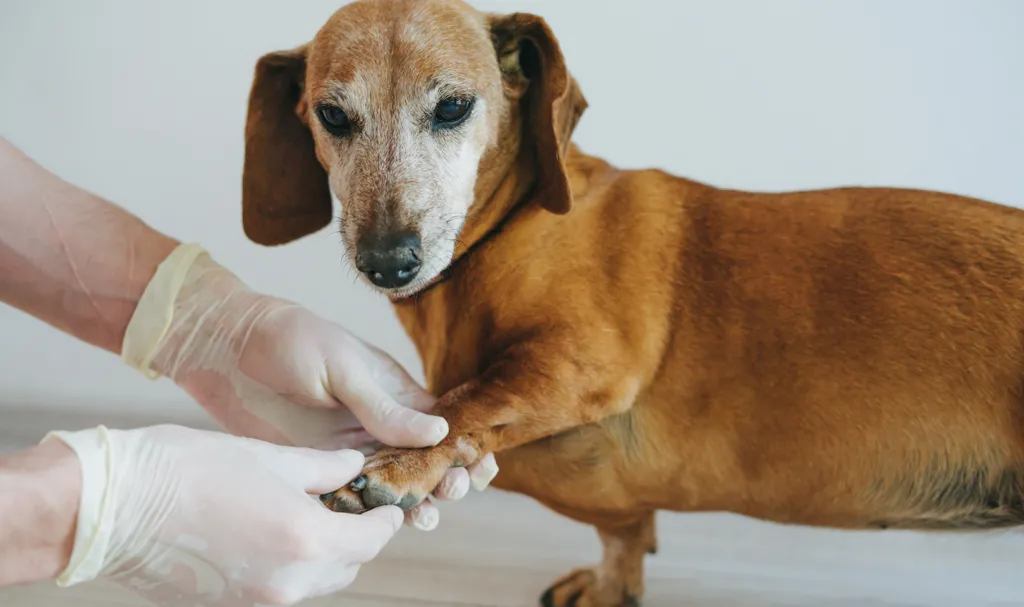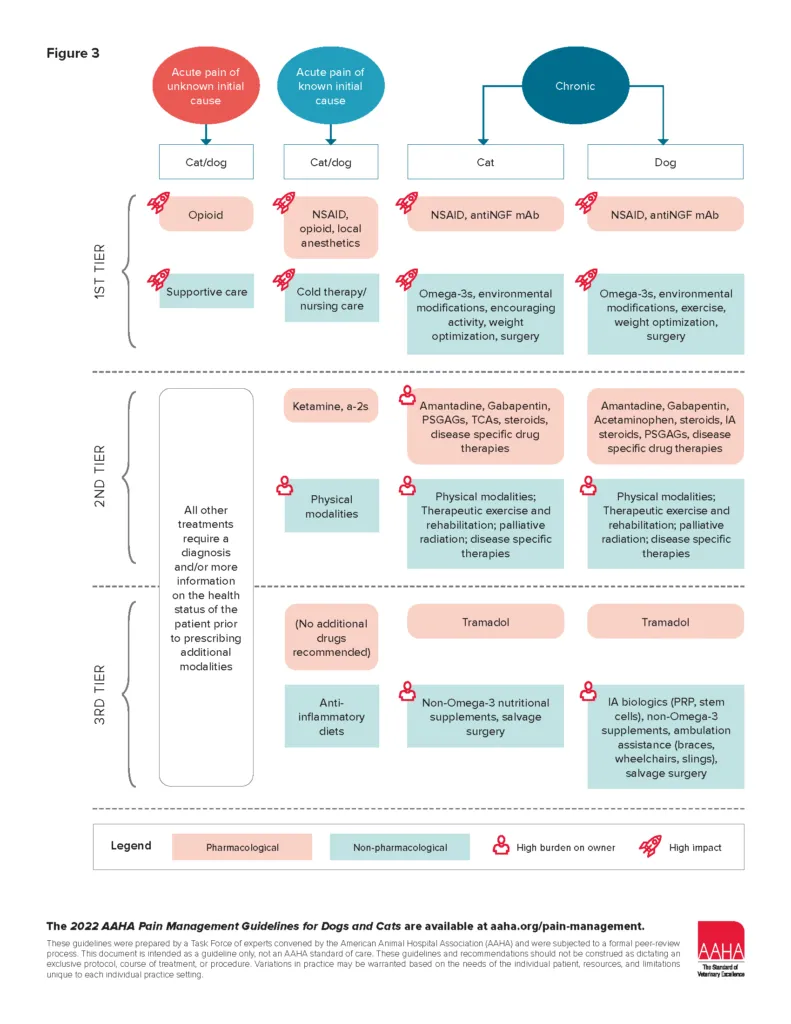Joint care options for osteoarthritis in dogs and cats


What we know about osteoarthritis (OA)
As a small animal practitioner, a common health concern seen on a daily basis is osteoarthritis in dogs and cats. Osteoarthritis (OA) is the progressive and irreversible degeneration of the synovial joints, including loss of cartilage, formation of osteophytes, and periarticular fibrosis, or thickening of connective tissue around the joint. It is also referred to as degenerative joint disease (DJD). Primary arthritis is associated with aging and the chronic wear and tear on joints. Secondary arthritis is understood to be the result of externally caused damage to joint cartilage, (i.e. a previous injury). Per the Veterinary Information Network (VIN), as many as 60% of dogs and 90% of cats (over 12 years of age) showed radiographic evidence of OA. While there are various diagnostic tools including physical exam findings to determine if pets are suffering from OA, OA unfortunately is not curable. Treatment for OA centers around minimizing further degenerative changes to the joint, keeping and restoring joint function, and alleviating the pet’s discomfort.
Sometimes pet owners will come to you with concerns that their older pet is not using the stairs as well, seems stiff, or cannot do the normal activities it used to. However, often during routine wellness exams, comments will arise about the pet “slowing down” or “showing its age.” Digging in deeper for more specifics can often help guide the history to help owners see where mobility changes may be starting to affect their pet and its quality of life. Additionally, there are several questionnaires that can be useful to help gauge the pet’s discomfort, which may be more objective.
Questionnaires
- Liverpool Osteoarthritis in Dogs (LOAD)
- This is a questionnaire that can be sent to owners prior to their dog’s appointment. The answers will generate an overall score that will help reflect the severity of OA. There is then a separate questionnaire that can be used for follow-up visits to gauge worsening OA or help determine if treatment is working.
- Colorado State University Pain Scale
- Canine Arthritis Resources and Education (CARE)
- This organization’s website has an abundance of information for dog owners as well as membership opportunities for veterinarians.
- Cat OA Checklist by Zoetis
Additionally, Canine Osteoarthritis Staging Tool (COAST) is an assessment tool for veterinarians to use to determine the stage of OA a dog is in. During or after an examination, veterinarians can use their interactive PDF to fill out the questionnaire which will then calculate their OA stage.
Joint therapy and care
Many types of joint therapy and care are available, and often using more than one modality will give pets more relief. Additionally, the American Animal Hospital Association (AAHA) has a helpful flow-chart for pain management that can help guide your thought process as you determine best case options for the patient in front of you.
Preventative:
- Weight management (keeping a lean body condition)
- Regular low impact exercise
- Regular nail trims
Chondroprotective agents:
- Omega 3 fatty acids (fish oil)
- Glucosamine chondroitin
- Polysulfated glycosaminoglycan (PSGAG, Adequan)
- Hyaluronic Acid
Physical medicine and alternative therapies:
- Acupuncture
- Energy modalities (therapeutic laser, pulsed electromagnetic field therapy, therapeutic ultrasound, shock wave therapy)
- Physical therapy (underwater treadmill, rehabilitation etc.)
- Surgery
Medical therapies:
- NSAIDs (routine bloodwork monitoring highly recommended)
- Gabapentin
- Amantidine
- Anti-NGF monoclonal antibody therapy (Solensia, Librela)
Additional supportive care options for end-stage mobility concerns:
- Provide non-slick surfaces, nail caps, rubber booties etc.
- Use harness that includes hip coverage for supporting
- Diapers for incontinence – these need to be changed regularly to avoid urine scald, infections, etc.
- Ramps, steps, etc. – make sure to instruct owners that their pet will need plenty of encouragement and positive reinforcement to be comfortable using these-allow time and patience for training
In summary
For many of our pets, a multimodal approach to joint care, pain relief and mobility concerns is needed and has better outcomes than using one therapy alone, especially as disease progresses. Also, keep in mind that individual variation occurs between pets and what works for some may not work as well for others. Some adjustments may need to be made over time, and this is something that owners should be prepared for as they may not realize this. Continue the communication with owners over time, as you continue to support their pets.
Additional resources available through AAHA:
Mobility Matters: A Practical Guide for Recognizing and Managing Osteoarthritis in Dogs and Cats
Pain Management Guidelines for Dogs and Cats: Resource Center
Flow Chart for Pain Management (below)

